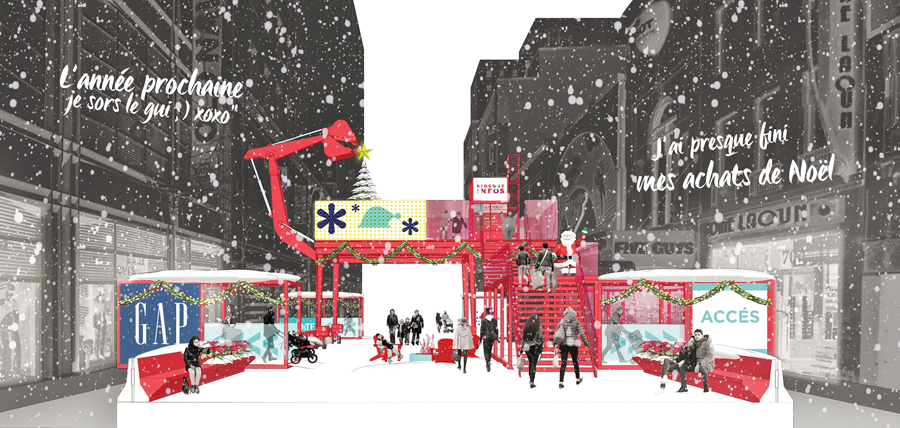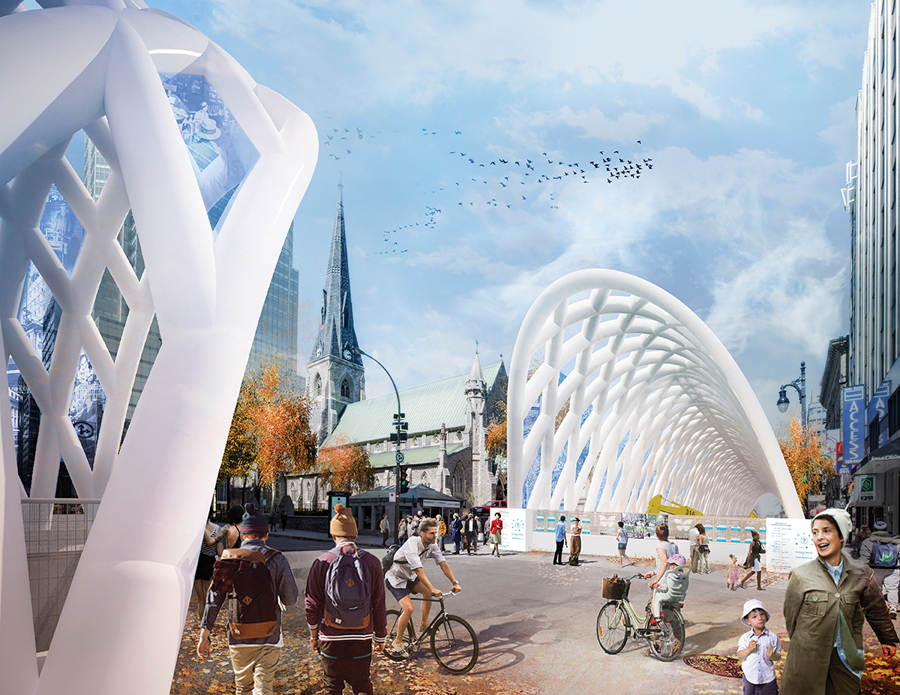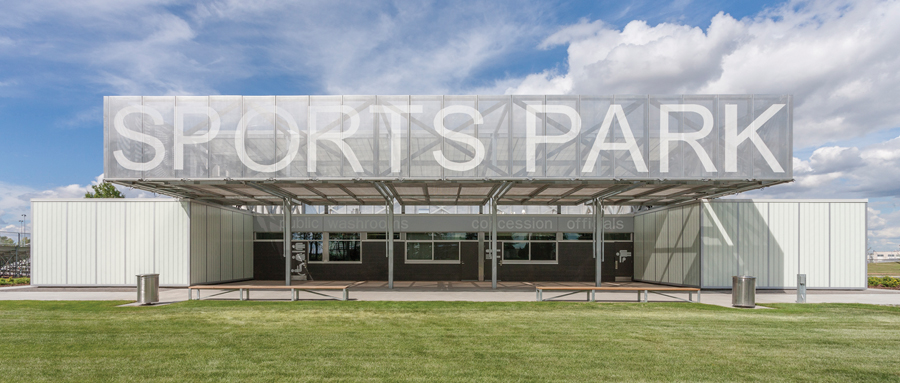Why Canada Needs a Public Architecture Policy

Fifty years after Canada’s Centennial, it is natural to compare the public patronage of architecture in the 1960s with today’s procurement for public buildings. On the positive side, there is increased transparency in public sector commissions, and former practices such as nepotism or cronyism have been greatly reduced. But on the flip side, the interpretation of current rules has created unnecessary barriers to achieving architectural design quality and long-lasting value.
Our municipal, provincial and federal governments should be promoting innovation and design excellence. This is necessary to create high-quality buildings and spaces in Canadian cities, and also to develop a strong market both in Canada and abroad for designers and architects. A solid architecture policy could achieve this by providing a clear set of guidelines to direct the processes of selection, design development and execution for public commissions of buildings and spaces. A policy can expand on existing directives—for example, providing guidance on how the public-sector procurement principles of fairness, transparency and value for money should be interpreted specifically for architecture projects. Some of our provincial and national architecture bodies have bandied about the idea of an overarching architecture policy, but without yet achieving successful widespread adoption.
My experience as a director of a small architecture studio in Ontario, and as a representative of England for the United Kingdom government at the European Forum for Architectural Policies in the late 2000s, have led to some thoughts on principles that would foster architectural excellence in public buildings. These are intended as a starting point for
a much-needed discussion to which I welcome my colleagues in architectural practice, public sector roles and architectural associations to contribute. The ideas draw heavily on examples from Edmonton and Montreal, Canada’s current leaders in the public commissioning of quality architecture.
1. Select architects based on quality, not lowest cost.
Selecting architects based on lowest-priced design services is a false economy. Fee is rarely the only evaluation criterion for design team selection. Nonetheless, even on the low end (weighted at 15-20 percent), it is often the tipping point for selection.
There is nothing in Ontario’s Procurement Directive that stipulates lowest fee as a requirement for selection. Nonetheless, many public-sector agencies include this constraint in their policies or in practice. To address this misconception, the Ontario Association of Architects (OAA) recently commissioned a study from a preeminent construction lawyer, who agreed that public sector clients were mistaken about the requirement for lowest fee, and that they were free to instead focus on selecting architects based on best quality service or design.
The City of Edmonton recognizes that low architectural fees can have a detrimental effect on quality. Therefore, it sets a fee target within plus-or-minus five percent of the Alberta Association of Architects fee schedule. Anyone submitting a price higher—or lower—will lose points. This may seem radical, but research supports it as a fiscally responsible approach.
The Federation of Canadian Municipalities, the National Research Council of Canada and the Government of Canada have produced a national guide entitled Selecting a Professional Consultant. They found that the best value for a client is “achieved when the focus is on finding the most effective, long-term solution to a problem, not the cheapest design.” The design team’s work represents less than 10 percent of the capital cost of a building, but directly affects the other 90 percent in construction costs—not to mention impacting long-term maintenance costs, the health of the people who use the spaces for years to come, and the vitality and competitiveness of our cities. According to the National Guide, even a modest increase in design cost of 0.3 percent can return savings in the ratio of 11:1.
2. Construction expertise and quality must be valued.
Last November, City of Toronto chief planner Jennifer Keesmaat hosted a roundtable discussion titled “Design Excellence: Implementation in Public Projects.” Brent Raymond, partner at DTAH, made a point that seems obvious to architects—design detailing and construction quality are both important to the final result.


Raymond demonstrated how, whether you select high-grade or standard low-cost materials, quality will only be delivered if the person building the project understands the materials and takes care in how it is constructed. This is why contractor selection by tender price alone is not appropriate, and does not demonstrate the best value for money. He reinforced his argument by quoting Benjamin Franklin: “The bitterness of poor quality remains long after the sweetness of low price is forgotten.”
The City of Toronto has recently received private donations for key public spaces including the Don River Trail and The Bentway. As program manager in urban design Alka Lukatela shared, City staffers recommend that these third parties procure construction outside of the City’s lowest-bid tender process—a true sign that the process is broken.
3. Foster innovation.
The way a Request for Proposal is structured can stymie innovation. Evaluation criteria are often drafted to prefer bidders who have completed multiple similar projects, but not necessarily the best or most innovative work. RFPs also frequently ask for a laundry list of consultants that may or may not be relevant, rather than allowing the team lead to build their own list based on their approach and experience.
An alternative can be seen in the work of city agency Design Montréal. In a recent competition for a four-year temporary design solution to mitigate the effect of roadwork on Saint Catherine Street West, the agency didn’t specify whether the lead needed to be an architect, landscape architect, or graphic designer. Any design practice that met
a minimum experience requirement could apply and assemble a team.
Our studio was shortlisted for the second stage, and we were paid $25,000 to develop our idea. We were allowed to build a team appropriate to our design solution. We proposed a narrative that brought “Catherine” to life through a responsive moveable public space involving robotics, so we brought communications and interactive designers on board, as well as a structural and lighting engineer, and a company that had built temporary Cirque du Soleil venues.

The evaluation criteria and process for this commission consistently stressed innovation and design excellence. The winning team, KANVA, is building a series of large-scale inflatable shelters. They didn’t need to show that they had built three temporary inflatable structures of the same scale in the last five years. They were asked instead to demonstrate that their design team had the relevant experience to execute their vision.
4. Strengthen the architecture industry through creative opportunities.
It is important for the design industry as well as public-sector agencies to nurture a healthy pool of talent and competition for future projects. To counter challenges such as the difficulty for small firms to compete and the tendency towards mergers in the industry, Design Montréal has set up a multi-pronged program that is seeing tangible results. In the last ten years, the city has held 49 design competitions and workshops. Among its project competitions, 22 were anonymous. Over 30 design and architecture firms won their first municipal contracts through Design Montréal’s activities—and many of these projects have gone on to win awards. Design Montreal is modestly sized, with six staff members and $1.5 million in annual funding from the city and province. Why not scale up its success through federal innovation funding, creating a Design Canada agency to support the design sector in every Canadian city?

Anonymous design competitions for key small- and medium-scale buildings are effective in sparking innovation, achieving the best design quality, and creating opportunities for talented architectural practices—arguably more so than competitions for large building projects with multiple stakeholders. For smaller buildings, competitions can bypass the initial Request for Qualifications stage, which can be a barrier for entry to small and emerging firms. In 2011, the City of Edmonton ran an anonymous design competition for five park pavilions. Running the competition cost $65,000—money well spent if you consider the lasting legacy of the park structures, which received many accolades, and positive press for the city.
Due to the lack of true “open” competitions, our talented designers are going elsewhere to compete: Office OU from Toronto recently won an anonymous international competition for the new National Museum Complex Master Plan in South Korea, but would likely not have passed the RFQ stage for local design competitions of a comparable size, like the new Toronto Courthouse or Etobicoke Civic Centre.
5. Foster design champions in the public sector.
We need champions supporting design at every level. This is vividly demonstrated in the City of Edmonton. In 2005, then-mayor Stephen Mandel said, “Our tolerance for crap [architecture] is now zero.” In 2010, the City of Edmonton formed a new department integrating infrastructure services. They created the position of City Architect and hired Carol Bélanger, FRAIC, who says: “I want to franchise my position across the country. Every city needs an architect at the table who is a steward, and who is looking out for the public interest.”
6. Simplify the process—from procurement to design decisions.
Simplifying the processes for selecting a design team, and later for internal approvals, is important to achieving quality results. Design sign-off can be confusing in public sector agencies: the role of various departments and committees in decision-making is not always clear, and their directions can be contradictory. A good project manager will help the architect understand what input must be incorporated, and will negotiate between their internal colleagues at an early stage. At the City of Edmonton, policy direction and manuals detailing the decision-making process are in place, so that projects don’t get derailed by personal opinions or design choices by committee.
There are many examples of excellent public buildings and spaces in Canada, but there could be many more. The country would benefit from following the examples of the City of Edmonton and Design Montréal, and implementing quality-based guidelines for commissioning architects and building architecture. Through a concerted effort, architects and their public-sector clients can work together to build a lasting legacy that Canadians can be proud of in 2067.
Helena Grdadolnik is a director at Toronto-based studio Workshop Architecture.
